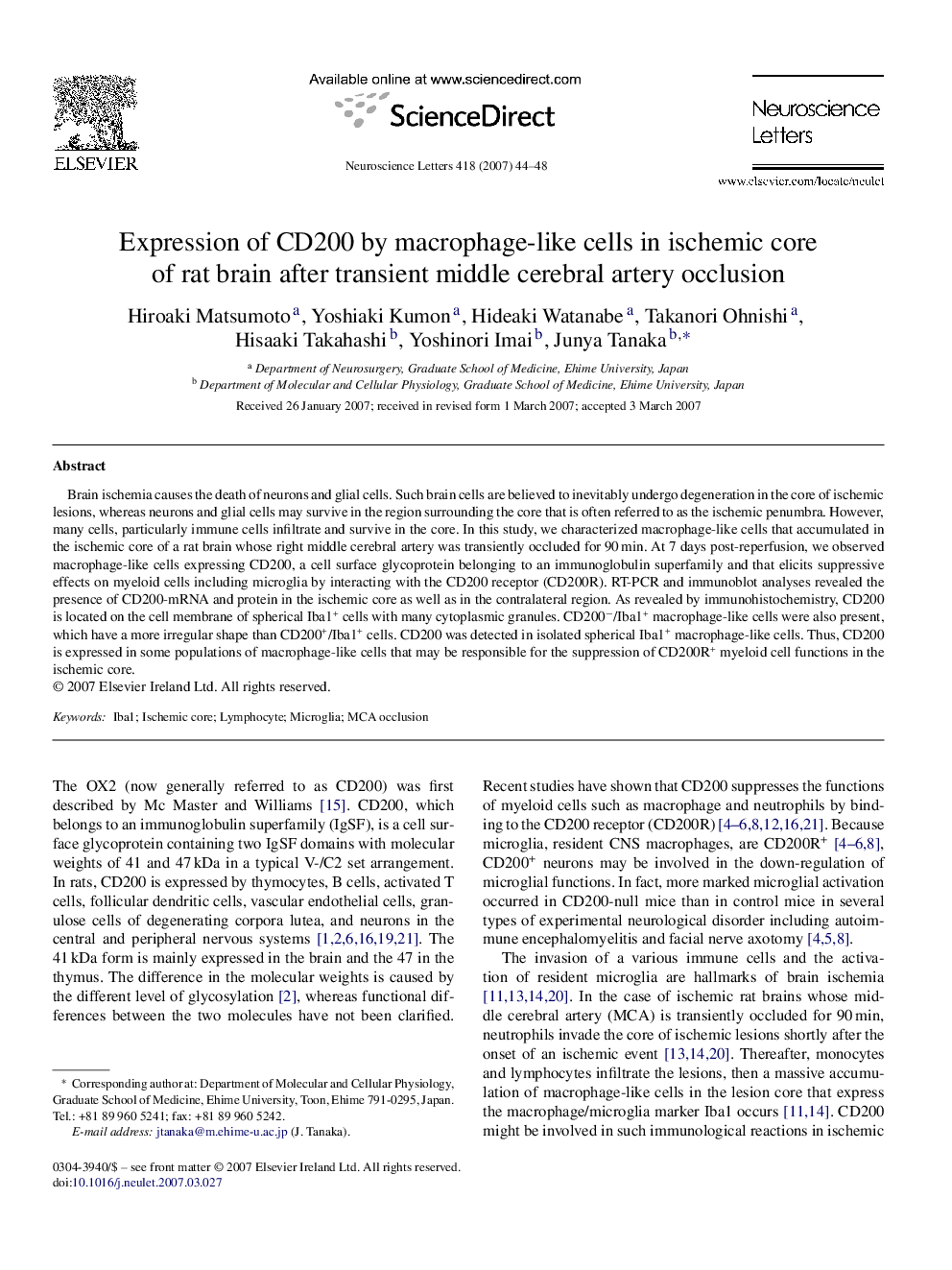| Article ID | Journal | Published Year | Pages | File Type |
|---|---|---|---|---|
| 4349751 | Neuroscience Letters | 2007 | 5 Pages |
Abstract
Brain ischemia causes the death of neurons and glial cells. Such brain cells are believed to inevitably undergo degeneration in the core of ischemic lesions, whereas neurons and glial cells may survive in the region surrounding the core that is often referred to as the ischemic penumbra. However, many cells, particularly immune cells infiltrate and survive in the core. In this study, we characterized macrophage-like cells that accumulated in the ischemic core of a rat brain whose right middle cerebral artery was transiently occluded for 90Â min. At 7 days post-reperfusion, we observed macrophage-like cells expressing CD200, a cell surface glycoprotein belonging to an immunoglobulin superfamily and that elicits suppressive effects on myeloid cells including microglia by interacting with the CD200 receptor (CD200R). RT-PCR and immunoblot analyses revealed the presence of CD200-mRNA and protein in the ischemic core as well as in the contralateral region. As revealed by immunohistochemistry, CD200 is located on the cell membrane of spherical Iba1+ cells with many cytoplasmic granules. CD200â/Iba1+ macrophage-like cells were also present, which have a more irregular shape than CD200+/Iba1+ cells. CD200 was detected in isolated spherical Iba1+ macrophage-like cells. Thus, CD200 is expressed in some populations of macrophage-like cells that may be responsible for the suppression of CD200R+ myeloid cell functions in the ischemic core.
Related Topics
Life Sciences
Neuroscience
Neuroscience (General)
Authors
Hiroaki Matsumoto, Yoshiaki Kumon, Hideaki Watanabe, Takanori Ohnishi, Hisaaki Takahashi, Yoshinori Imai, Junya Tanaka,
